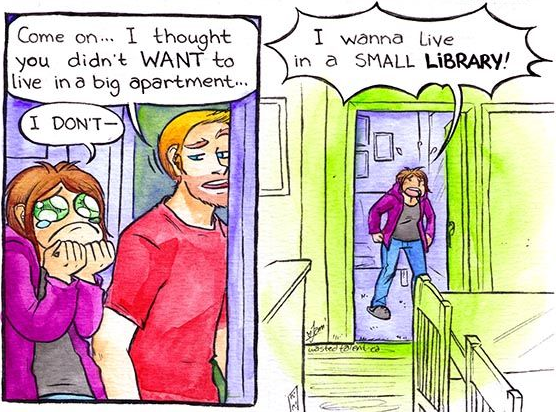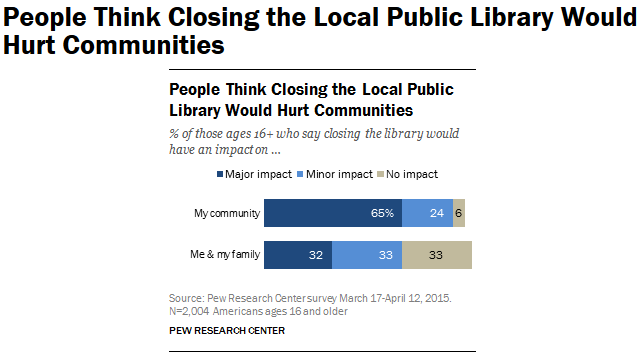As you might expect of someone who is working toward becoming a “real” librarian (one with an MLIS, that is), I am very interested in information. Librarians are more than people who check out books to you and catalog those books when they first arrive at the library. We’re expected to be, quite literally, masters of information. (The MLIS stands for Masters of Library and Information Science.) My main focus, in fact, is the information science part, as I am largely interested in the digital archive and information architecture part of the job (i.e., more database, less paper). I not only am interested in how information is collected and disseminated, but I am also interested in information in general.
In one of my previous classes, I became particularly interested in the divide of information between groups of people. This could be a class divide (rich/poor) or a racial divide (people of color/Caucasian) or a country divide (United States/South Africa), but I am interested in the disparity between any and all of these divides. (The technical term for this is “digital divide.”) One of the big questions I quickly came up with myself was, “Even if we digitize what we consider everything, how much are we actually marginalizing the part of the world that relies on oral history or oral storytelling? [These still exist, by the way.] How much history and cultural richness are we actually losing by digitizing so much, but ignoring so much a the same time.” And perhaps the most concerning to me was one evening when I turned to my husband and said, “I just realized that when we speak of digitization of information, we are speaking from a mainly West-centric view, which means we are largely ignoring and losing how many cultures and worlds of stories and histories and mythology by our rushing ahead of a world that still has too many areas that are far, far behind our digital egocentrism. What are we losing that we don’t even know we’ve lost? Will future generations think we’re a more homogenized world than we truly are, because our digital focus is so centralized?” Yes, I mourn for the unmourned, I suppose. (I also am viscerally saddened each time I learn of a language dying with a single person who was the last native speaker of that language. We have then lost something we never quite understand and can never retrieve.)
I was greatly interested in this article (preserved via PDF below), then, that I ran into earlier this week: “5 Myths About the ‘Information Age’.” I was most happy to see numbers three and four listed, because they also readily tie into the digital divide. Anyone who has searched for any bit of information online without finding it can attest to the fact that not everything is online. And, as mentioned above, there are vast swaths of information not found online, because those cultures or communities are not engulfed in a race to digitize their beings. In a society where it seems everyone has a computer in his/her pocket, it might be hard to understand or remember that not every country has the riches of technology that we do.
And number four. Oh, number four! My first big paper in my MLIS program was on my new love: the digital divide. Again, it’s hard to understand that not even everyone in the United States has access to broadband services. And I don’t mean solely because they can’t afford it. Oh, no, not at all! I mean, quite literally, because broadband is not even available where they are. Before I moved up to Duluth, broadband wasn’t remotely possible in the area where I lived, which was the largest city in a three- or four-county area. It was still years after I left that town before anything other than dial-up (yep, “simply” DSL or cable even) was available. In fact, in the small village where I lived the longest while growing up, broadband service only recently became available. (Are you interested in the state of broadband in the United States? Well, so is the government. Here’s the latest report from August 2012, which includes a link to a map showing the latest data about areas with and without broadband. Yes, there really are a lot of areas without it. Surprising, eh?) This is a big reason that I signed us up a few years ago to participate in the FCC/SamKnows program that measures broadband service: existing broadband should be at the speeds stated and there needs to be an expansion of broadband available at higher speeds to rural areas in the United States. We are lagging behind the world in this area (and in high-speed public transportation, but that’s another gripe for another time), and it’s sad how little most people think about this problem, which is to the detriment of rural education and literacy.
While many of us think we’re living in the “information age,” we’re actually in a fairly small bubble of people who have access to vast amounts of (but not remotely all) information at our fingertips. We’re a privileged group, and I think more people need to recognize this fact and push for greater digital literacy and equality.
Edited to add: This is an interesting breakdown of the latest Pew survey of home broadband access from the Librarian in Black. The survey includes smartphone use, although if one reads through digital divide literacy, one notices that there also tends to be a divide of people who only have a smartphone. Most especially, this divide has shown that knowing how to appropriately search and find reliable information is more prevalent among people with devices such as a home computer or a laptop and less among people with only smartphones. And as the Swiss Army Librarian mentions and as I ran into regularly into my digital divide research, there is a small subset of users who choose to not have broadband access of any kind, and those users must also be accounted for.



